With customers, I am traveling on a Gebeco trip (a German tour operator) in Southern Peru, in the Andes. (Zum deutschen Blog) This also includes Machu Picchu!
This blog post contains unpaid advertisement. Al I have written is my personal opinion. You´ll find affiliate links. If you buy a product through this link, you´ll not pay more, but I’ll get a small commission, that helps to go on with my blog.
Those who speak of Peru, probably automatically think of Machu Picchu as well. Meanwhile we all got used to the unusual height. And the altitude of this mysterious city is only 2400 m above sea level.
The drive to Macchu Picchu
Our hotel, the San Agustin Urubamba, which is located at just 2900 m, we leave early in the morning. We drive the same route as yesterday to Ollantaytambo, where the trains leave for Machu Picchu. Only during the dry season there are few trains per week that start in Cusco.
There is a lot of bouldering and crowding, as a train leaves every few minutes. Tickets on site are hard to get, there is nearly no chance without a reservation. The tickets are personalized and got the passport number as well, so that no black market trade with the already expensive tickets is possible.
There are trains with and without included service, which also differ in the comfort. We got prebooked seats with service.
Each place is furnished with a table and also with cutlery. The wagons have large panorama windows, also up in the roof, so that also the high mountains that surround us can be seen properly. Shortly after the departure, the service staff introduces themself by name and serves us a delicious sweet quinoa cake and a drink.
Because of the incredible panorama I nearly forget to eat. The tracks follow the course of the Rio Urubamba, which is currently watering because of the rainy season. Here, between the high, towering mountains, its water gets wilder, countless rapids can be seen. Our guide César tells us that the tracks that lie some meters above the river banks were completely rinsed some years ago and the railway line was thus blocked for 3 months.
After about 40 minutes’ drive, César draws our attention to the beginning of the Inca Trail. Instead of comfortable with the train, hiking you can also reach the hidden city in 4 days. Anyone who chooses this route should book this adventure at least one year in advance with a tour operator, because not only in Machu Picchu visitors are limited to 2500 daily. Also hiking the Inca-Trails is very limited and only possible with a guide. Since César does this occasionally, he tells me that on the way are only campgrounds and the hikers better engage a bearer, because the trail also leads over the mountains.
After about 45 km and 90 minutes’ drive, the train reaches the terminal station in Aguas Calientes. Here we need a new ticket, which is valid for the bus that goes up to the entrance of the city on the mountain, Machu Picchu. The road winds up the mountain for 25 min. Again and again we get a unique view of the rushing Urubamba River and the surrounding mountains.
The Highlight of the trip – Machu Picchu
There we are, at the entrance to Machu Picchu! The vegetation, which has already changed during the train journey from lovely to rain forest, is almost impenetrable where man does not interfere. Even the almost extinct spectacle bear has been sighted several times.
Again, the passport must be shown together with the ticket. An urgent advise, use the bathrooms here as within the excavation site there is no such thing.

Inca Trail to Machu Picchu
https://www.10adventures.com/tour/inca-trail-trek-to-machu-picchu/?ref=9349326GabrielaAufReisen
Then I reach the first viewpoint over the city on the mountain. I cannot believe it, it´s breathtaking! In the background I see the mountain Huayna Picchu, which looks almost like a sugar loaf, surrounded by clouds. The naming Machu Picchu, which is situated exactly opposite, unfortunately wraps itself in clouds. Its name means “Old Mountain”.
And then the stone houses and terraces. Incredible! Even if the builders could find the building material here, what an effort to build a whole place like that here.
Only the temples were built with the exact hewn stones. Residential and storehouses were built with field stones. How can we recognize that these are original buildings and not reconstructions? The Inca did not build straight walls or gates. They were always running upwards. This was an earthquake-proof construction. The reconstructions are straight as the excavators at that time probably did not know about the old construction method.
We take photos from the grounds from several great viewpoints. Clouds come up again and again from the deep valleys, the warmer it gets.
A path leads through the complex, many houses can be explored. Again and again you can see that the natural rocks have also been integrated into the construction method.
We or the other tourists must have angered the Inca sun god, because it starts to rain after a while. Unfortunately it rains at least 9 months a year. I am well equipped, and I prefer both my raincoat and rain pants. A good decision, because from the initial drizzle it becomes a permanent downpour, which in no time at all changes the paths in soaked mud and puddles. The lamas, who are peacefully grazing between the houses, prefer to find a less wet shelter.
We humans are less fortunate because only after we have about half the distance behind us, we find two restored houses with roofs that are right at the temple of the Holy Rock. From here you could start the ascent to Huayna Picchu (2700m). Certainly not in the weather … A while ago I saw people at the top, hopefully they find their way down safely.
In the meantime, I have already tried to photograph several temple ruins with their unique hewn stones. Not so easy because I try to protect the camera as best as it can from the rain.
Unfortunately, the group decides on the end of the tour. We follow the signposted paths towards the exit. At the temple of the condor we stop briefly. The stone on the ground looks like a condor. I am happy that I already photographed the sun temple, a round tower, from above.
I would have liked to have looked at the terraces, the palaces, the cemetery and the quarry more closely, the time would be there, but unfortunately it does not stop raining. So I’ll have to come back some day!
What is impressive with the water masses coming from above, are the many still intact drain trenches and pipes that lead through the whole area. The weather then must have been very similar …
One of the many already waiting shuttle buses brings us down again to the village, where we spend the time to the departure of the train with food and shopping. Anyone who wants to go to the station has to walk through a kind of shopping mall with countless stalls, that want to sell beautiful art but also kitsch to the lingering tourists.
On the train we again get a little snack and the “Devil” dances in front of us in a colorful costume before we get to see a small fashion show by the service staff.
Meanwhile, it is dark. In Ollantaytambo our bus is waiting for us, which takes us in a two-hour drive back to about 3350 m altitude, namely to Cusco.
But more of this in my next blog. More pictures and my new activities you´ll find on Pinterest, Instagram or on Facebook . As always, I am looking forward to your comment or your “like”!
Did you miss my post about Urubamba? No worries, go this way!
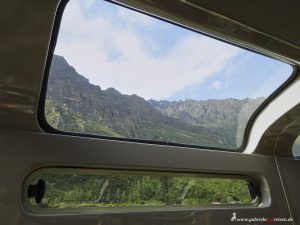
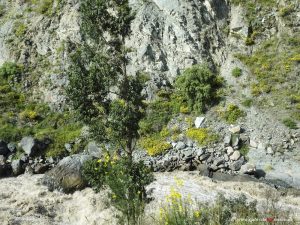
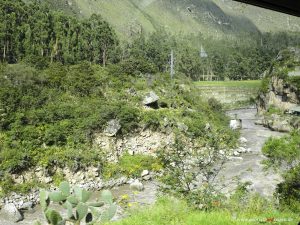
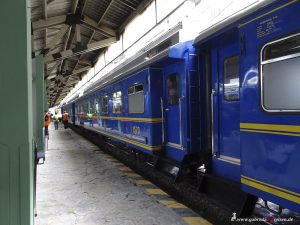
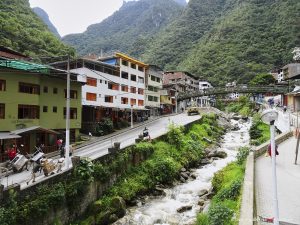
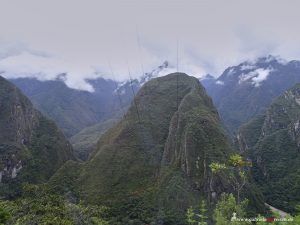
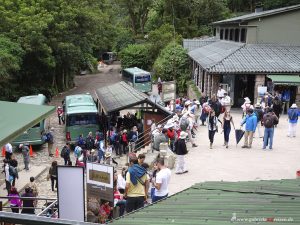
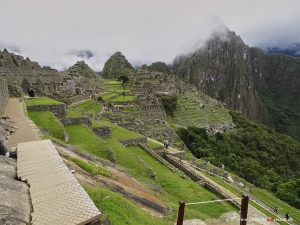
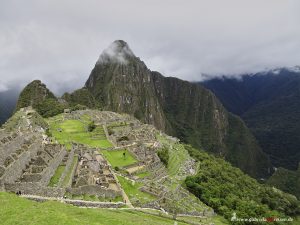
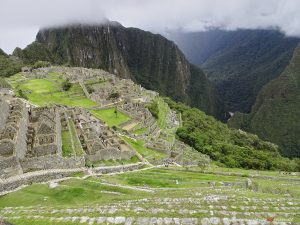
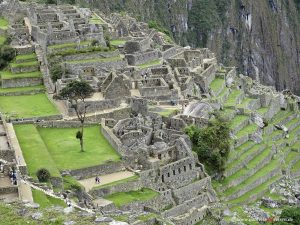
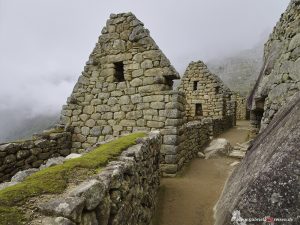
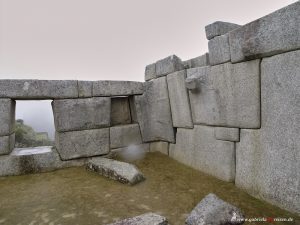
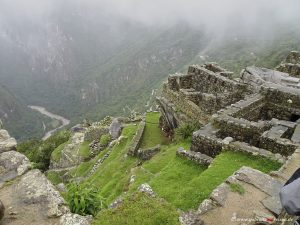
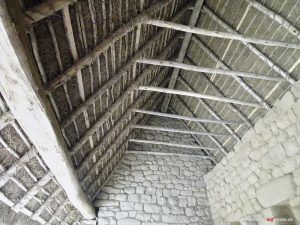

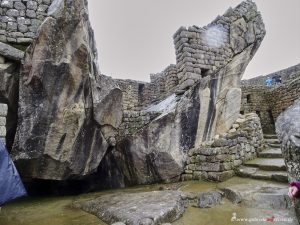
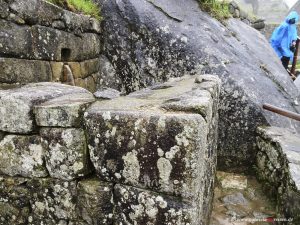
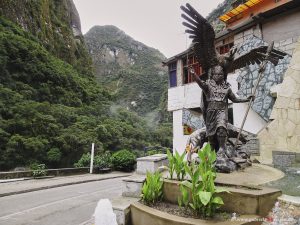
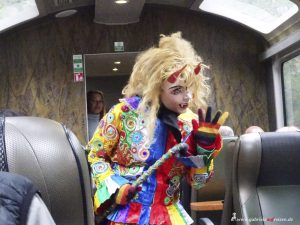
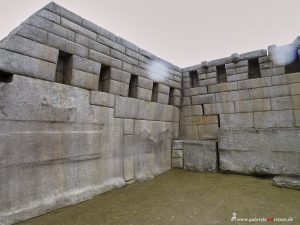
Be First to Comment